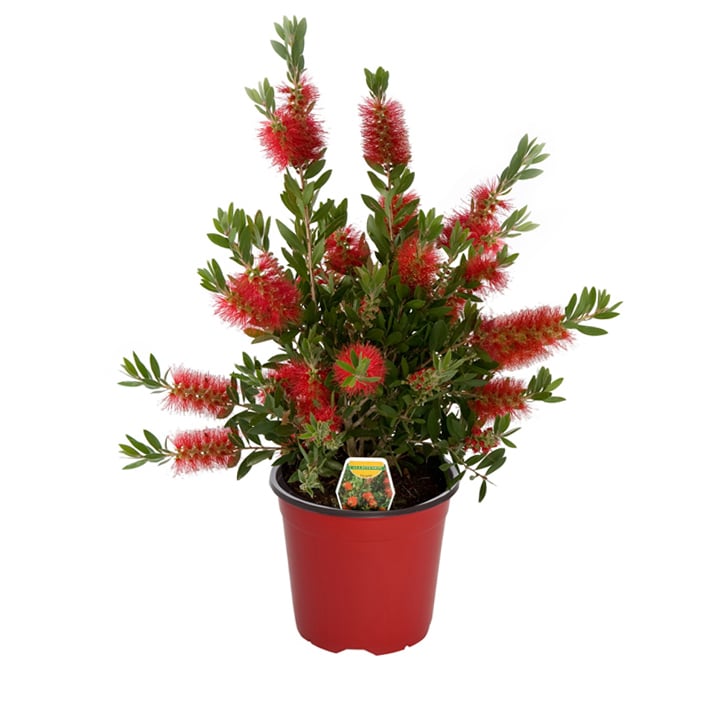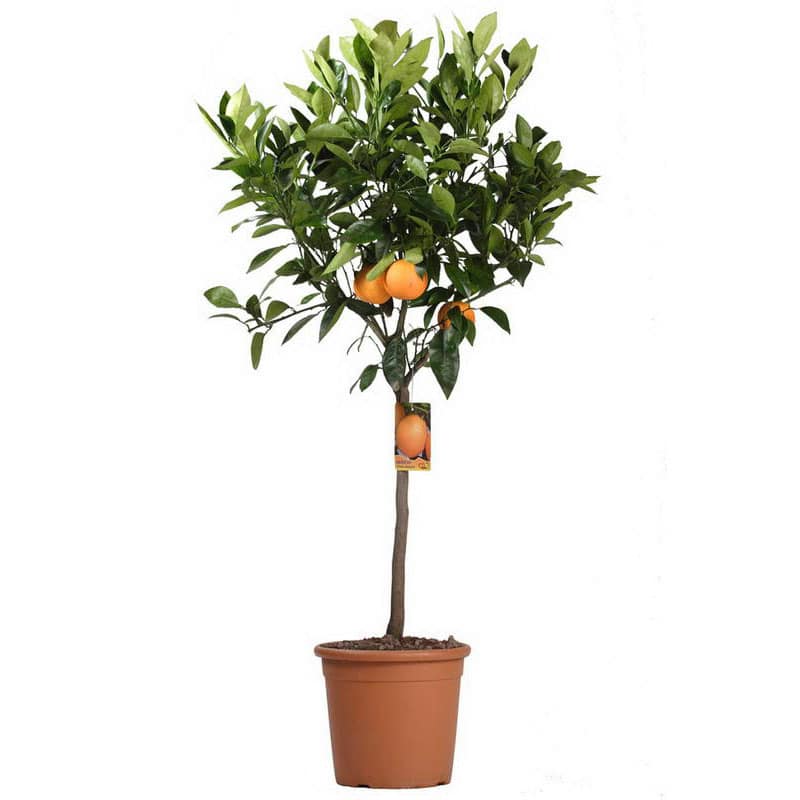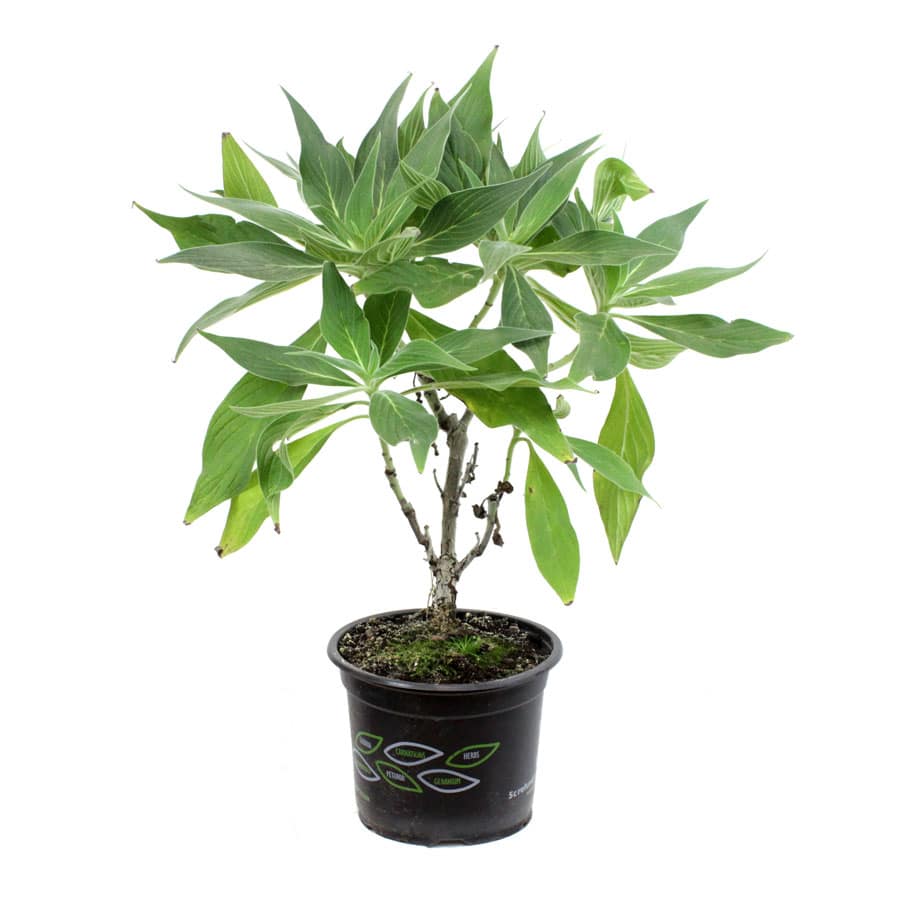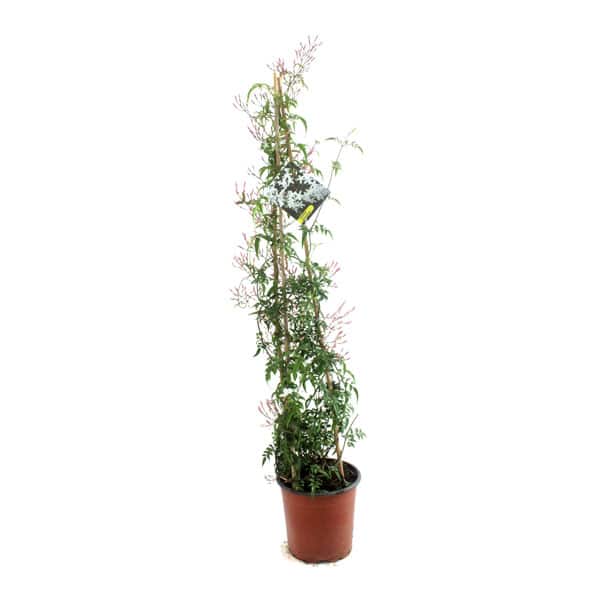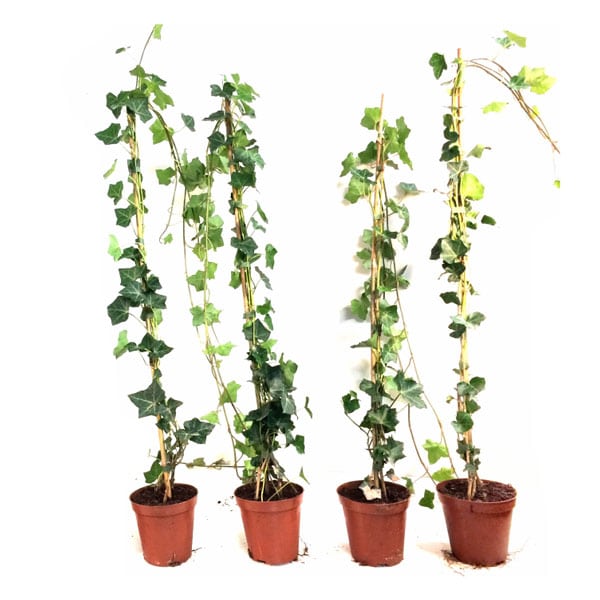Our customers frequently ask for our advice when it comes to purchasing plants for their garden or rooftop. In addition to sunny and windy conditions, some houses are situated close to the sea and therefore we also require plants that tolerate salty conditions or in Maltese “Raxx tal-Baħar”. We will be listing some popular hardy plants. These will include climbing plants, shrubs, hedges, fruit trees and salt tolerant plants.
Metrosideros
Metrosideros Excelsa is known as the New Zealand Christmas tree due to its showy crimson bottlebrush-style flowers that decorate this evergreen shrub. Blooming happens in late spring and early summer. It can be placed in neutral to acid soil. You may prune to keep compact. It may be planted in the soil or planted in a pot and can also be used as a hedge. In addition to the striking flowers, it is great for controlling erosion. Very tolerant for drought, wind and salt spray! It may be placed in the sun or partial shade and will grow easily in dry to medium moisture, alkaline and well drained soil. It makes a wonderful addition in the Mediterranean gardens.
Care Tips:
– Full sun to partial shade
– Drought and wind resistant
– Semi-frequent watering
Eugenia ‘Etna Fire’
Eugenia Etna Fire is a new variety that has been produced in Sicily in recent years. This plants had positive feedback when tested in both cold and warm, and salty conditions. It has an ornamental value and the ruby red coloured leaves makes it look very attractive. The Etna Fire is ideal for hedges and is very low maintenance. It also survives well in high and low temperatures. In summer it is very important to water frequently, especially if planted in a pot.
Care Tips:
– Full sun to full shade
– Salt drought resistant
– Water frequently
Callistemon ‘Bottle Brush’
There are many varieties of the Callistemon. This is an evergreen shrubs with bright red bottlebrush flowers in spring and summer. Birds are attracted to the flowers due to its nectar. Can be kept as a shrub in a pot or used as a hedge. It is very tolerant to drought and direct sunlight. The callistemon likes moist but well drained soil and is best grown in acidic conditions. It is a very popular Mediterranean garden plant.
Care Tips:
– Full sun to partial shade
– Drought resistant
– Frequent watering
Laurus Nobilis ‘Bayleaf’
Laurus nobilis or Randa in Maltese is a slow growing evergreen shrub and is especially known for its aromatic leaves that is used frequently in Mediterranean kitchens. It produces tiny yellow green clustered flowers. It can be grown into hedges or topiary. The Bay Laurel can be placed in full or partial sun. It is also salt tolerant and likes its soil to be kept moist.
Care Tips:
– Full sun to partial shade
– Salt drought resistant
– Water frequently
Olea Europea
Olive trees are slow growing ever-green plants. The leaves are grayish green and the flowers are white with a particular fragrance. There are many varieties cultivated for olive oil or edible olives. Some varieties are grown for aesthetic purposes due to gnarled trunks and some our grown as miniature olive trees more suitable for pots. Olive trees must be placed in full sun and it is important to be planted in fertile and well-drained soils. They make a wonderful addition to Mediterranean gardens.
Care Tips:
– Full sun
– Salt drought resistant
– Water semi-frequently
Citrus Trees
Lemons, orange and kumquat… Citrus trees in general require warm weather and are all sun lovers. They can be grown easily either in a pot or directly in the soil. They can be grown in sandy, neutral or acidic well drained soils. The Kumquat species is a very nice ornamental citrus tree and is known for its unique small oval shaped fruits.
Care Tips:
– Full to partial sun
– Keep sheltered from strong winds
– Water frequently in pots
Echium piniana “Tower of Jewels”
The Echium is native to the Canary Island. It is known to be very prestigious and despite being a biennial short-lived plants, it is very popular. The terminal blue and white flowers are conical shaped and become quite large. After this plant produces flowers, it makes seeds and dies. It can grow as tall as 5 m and may reach 1m width. Prefers full sun and fertile soils. Best grown in soil and makes a spectacular landscape.
Care Tips:
– Full sun to partial shade
– Water frequently
Strelitzia (Bird of Paradise)
Sterlizias are evergreens perennials forming a clump of long-stalked, linear to broadly oblong leaves with strikingly coloured flowers coloured in orange and blue flowers emerge in succession from a beak-like spathe. It may be placed in full or partial sunlight and can be planted in acidic, alkaline and neutral. The plant prefers moisture.No pruning is required. unfortunately may be susceptible scale insects and red spider mites.
Care Tips:
– Full sun to partial shade
– Salt drought resistant
– Water frequently
Hibiscus
The Hibiscus sp. is a very nice addition if you went to give your garden a tropical touch. You may grow your hibiscus in a pot or choose to plant it in the soil. If you are choosing a pot, please be aware that these plants prefer a cozy fit (slightly root bound). This plant requires a sunny spot and needs between around 4 hours of direct sunlight. Being tropical, it requires a warm and humid environment. Always make sure that your growing hibiscus plant has proper drainage. At blooming stage, the hibiscus requires more water, sometimes daily. A growing hibiscus plant needs lots of nutrients in order to properly bloom. You can either use a diluted liquid fertilizer one a week, or a slow release fertilizer once a month.
Care Tips:
– 4+ hours of sunlight.
– Well drainage needed.
– Water frequently.
Climbing Plants
First thing you should look at for climbing plants is preparing support for them. A trellis will give the plant plenty of places for it to weave around and spread out. You may also purchase other sturdy supporting accessories to help these plants grow.
Jasminum sp. “Ġizimina”
The jasmine plant is evergreen and is a very popular especially amongst our grandparents. It is known for its flowers that have a particular fragrance. There are many varieties nowadays. The jasmine can be grown in a pot or directly in soil. Fertilize once every two weeks for optimal growth. We recommend Ciemhus Univeral Fertilizer.
Care Tips:
– Does well in direct sunlight
– Tolerates partial shade
– Keep soil moist
– Drain excess water well
Hedera (Ivy)
Hedera sp. plant is known for attracting bees, beneficial insects, birds, butterflies and moths and other pollinators. The Hedera is evergreen in full sun to full shade in a moist, well-drained soil. It can be used to cover shady walls and trained to climb up or spread out along a low wall and to create a leafy backdrop beneath climbing roses for example. Fertilize once every two weeks for optimal growth. We recommend Ciemhus Univeral Fertilizer.
Care Tips:
– Full sun to full shade
– Use well draining soil
– Soil to be moist and cool
Plumbago
Plumbago auriculata, is a vigorous, evergreen climber typically use for covering large conservatory walls. The plumbago, locally known as “Ċelestina”, is a magnificent, superb vine noted for both its flowers and foliage. Plant plumbago in spring in a place with a lot of sun. It is advised to plant your plumbago in good flower plant soil mix.
Pour a layer of clay pebbles at the bottom of the pot to increase drainage and therefore growth of your plumbago. Regular watering upon planting is a must. Repotting helps replenish nutrients, it is recommended that you repot every 2 years. Birds and butterflies love plumbago.
Care Tips:
– Full sun to half shade.
– Water frequently in hot weather.
– Repot with new soil every 2 years.
Bougainvillea
Bougainvillea need a full day’s sun to bloom. These tropical vine-like shrubs are quite drought tolerant, love the sun, and pack a huge punch of color. They grow effortlessly in mild winter areas such as Malta. They can be grown in pots or planted in the ground. In spring, increase the frequency of watering to twice or three times a week, depending on outside temperatures. Make sure not to over-water bougainvilleas as they dislike having waterlogged roots. It’s best to water thoroughly and then allow the plant to almost dry out before watering again. In autumn, reduce the frequency of watering as growth slows. Bougainvilleas are largely trouble-free as long as they are given the right growing conditions.
Care Tips:
– Keep in a full sunny area.
– Be alert for signs of overwatering.
– Remove and excess water from plates.


